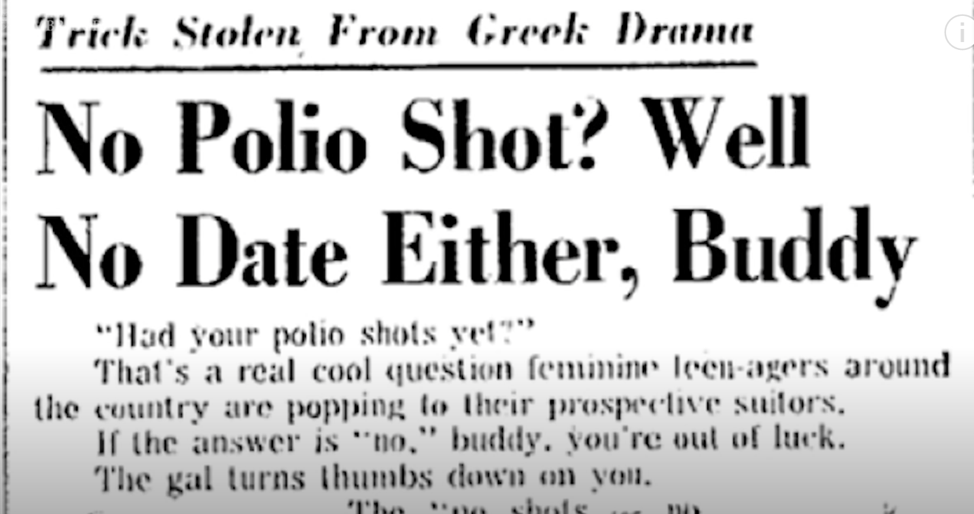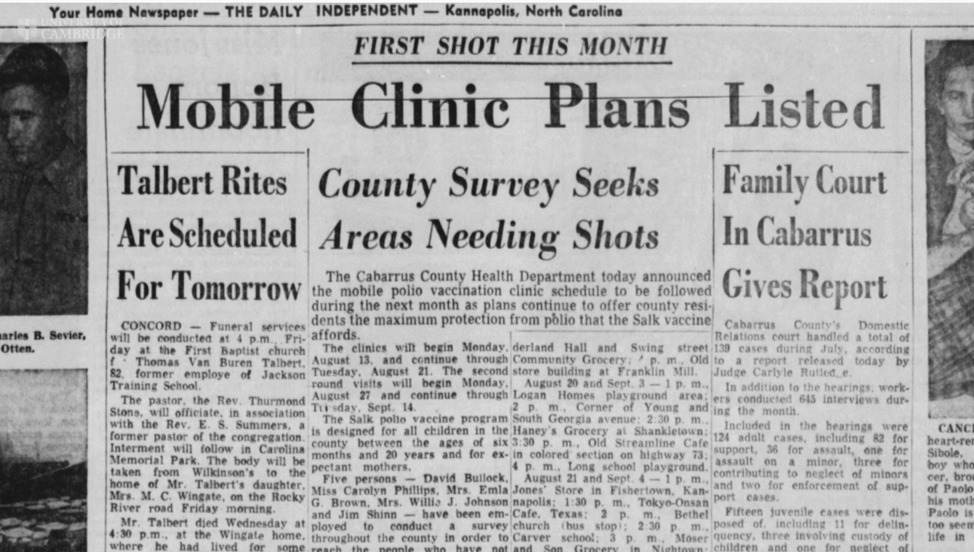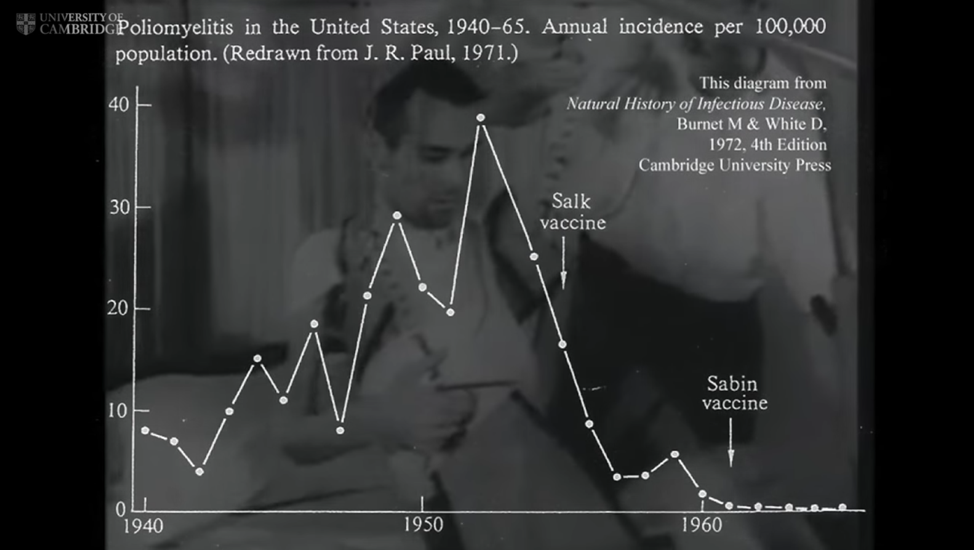 Covering COVID-19 is a daily Poynter briefing of story ideas about the coronavirus and other timely topics for journalists, written by senior faculty Al Tompkins. Sign up here to have it delivered to your inbox every weekday morning.
Covering COVID-19 is a daily Poynter briefing of story ideas about the coronavirus and other timely topics for journalists, written by senior faculty Al Tompkins. Sign up here to have it delivered to your inbox every weekday morning.
The race is on to develop a safe and effective COVID-19 vaccine. That’s good. But it won’t be worth much if we have no plan to distribute it.
My colleagues at PolitiFact explored the question of whether there is a national distribution plan. The answer, sadly, is “no.” But the people who plan such things said they are working on it. Let’s take a look at how this might unfold nationally and the key role your state will have in distributing a vaccine.
PolitiFact found:
“There is no national COVID-19 vaccination distribution plan, yet. So that is true,” said Michael Fraser, CEO of the Association of State and Territorial Health Officials.
Most of the experts we spoke with said the government’s efforts have been too slow, and states face too many unknowns to do their part in planning to vaccinate millions of people.
“This is going to be the most challenging, complex mass vaccination program ever attempted,” said Dr. Kelly Moore, who works at the Immunization Action Coalition and ran Tennessee’s H1N1 vaccination program.
PolitiFact laid out the next steps:
Results of the third phase will be submitted to the Food and Drug Administration. After the FDA licenses the vaccine, recommendations will be given about who should get the vaccine, and distribution will follow, said Dr. Carol Baker, a pediatrician who is an alternate liaison to a COVID-19 vaccines working group.
Federal health officials have generally predicted that the vaccine will be available in early 2021.
There are two committees working on recommendations for the CDC about vaccine distribution.
The Advisory Committee on Immunization Practices, a long-standing committee at the Centers for Disease Control and Prevention, formed a COVID-19 vaccines working group in April. The group’s next meeting on Aug. 26 will be publicly livestreamed. Recommendations about who should get the vaccine first are expected by the fall.
States will have a crucial role in distributing vaccines
PolitiFact explained that your state will have a key role in vaccine distribution. In fact, by the end of next month, your state should have a plan to present to the feds. What’s in that plan?
PolitiFact reported:
The CDC launched a pilot program with North Dakota, Florida, California and Minnesota as well as the city of Philadelphia to work on a vaccination response, according to a letter written by Nancy Messonnier, a CDC official, Aug. 4.
While the letter says that the pilot program will be a model for other states, it doesn’t give states much time to receive and implement the best practices from that pilot program.
The states have until the end of September to develop vaccination plans that will then be reviewed by the CDC and Operation Warp Speed, the federal government’s effort to fast-track the availability of vaccines. Those plans should include mass vaccination clinics, signing agreements with providers and identifying high-risk communities that will require additional outreach.
PolitiFact said states may draw on their experience with H1N1 vaccination programs and even the seasonal flu vaccines. But this is a way different mountain to climb. 90 million Americans got the H1N1 vaccine. The COVID-19 vaccine goal is 300 million. And remember, COVID-19 will probably require two shots and occasional boosters.
There are other challenges your states will face:
Vaccines may have cold storage rules of around minus 80 degrees Celsius, far colder than other vaccines. “We’ve never distributed a vaccine that required that before,” Moore said. “We don’t have a cold chain that exists currently that can take that.”
Journalists, this would be a good time for you to think through how you will cover the distribution story when it starts to take shape. Public information will be crucial — who should get it, where to go, side effects — and also protests, disinformation and debates over who should get the vaccine first.
Imagine what will happen when and if employers require employees to be vaccinated.
And it will probably be important to educate people about the importance of getting a second shot, assuming that will be needed. It is likely that a vaccine will cause at least a small reaction, similar to a mild case of the flu. You can imagine that it might be difficult to persuade people to go through that twice.
[the_ad id=”667826″]
The role of celebrities with vaccines
The people drafting the plan to distribute vaccines will also have to come up with campaigns to persuade people to get them. It would be wise to hook in celebrities from a range of demographics and political influences from the arts, sports, social media and TV.
Celebrities have a long history of speaking for and against vaccines.
Celebrities who oppose mandatory childhood vaccines gave energy to the modern movement. But in 1956, one of the hottest celebrities at the time, Elvis Presley, stood before cameras and allowed a doctor to stick a needle in his arm and deliver a polio vaccine to prove that he believed the vaccine was safe.
Cambridge University historian Stephen Mawdsley wrote that Presley’s backing of the polio vaccine led to a jump in young people getting vaccinated. Until then, they accounted for a big hole in the national vaccination effort. The Guardian quoted Mawdsley:
“The [Dr] Salk vaccine against polio had just been produced and young children were being vaccinated in their millions. However, teenagers, who were also vulnerable to polio, were not taking up the vaccine,” Mawdsley said. “Elvis was approached to provide publicity aimed at teenagers and agreed to help to put things right.”
Mawdsley documented that moment in a film in which Presley starts by saying, “Hey kids, could I talk to you for about 30 seconds? This is Elvis Presley.” He goes on to urge kids to give to the March of Dimes, which funded research and treatment for polio victims. In the 1950s, the March of Dimes started Teens Against Polio expressly to raise awareness among young people. In fact, one tactic was to promote the “No Shot, No Date” movement, in which young women were urged to deny dating anyone who had not gotten their polio shot.

(From Stephen Mawdsley’s film “Teens Against Polio”)
Teens Against Polio sponsored dances and concerts where the price for entry was a vaccination record. The effort to get young people vaccinated included weekend “teens only” events and the government rolled out mobile clinics to reach young people living in rural areas.

(From Stephen Mawdsley’s film “Teens Against Polio”)
And the effort included public appearances from young people who had been affected by polio, including in front of school assemblies, where they talked about the difficulties of living with polio and how they wished they had had the opportunity to be vaccinated. The result was a dramatic increase in teen vaccinations and a steep decline in new polio cases.

(From Stephen Mawdsley’s film “Teens Against Polio”)
The list of celebs who would be the most influential for an inoculation campaign might begin with some of the A-listers who have tested positive for the virus. It is a pretty long list. Wouldn’t you say that when Tom Hanks and his wife Rita Wilson tested positive that it focused early attention on COVID-19? Who is the Elvis of today who would influence younger people to take a vaccination?
CNN’s Dr. Gupta decided against sending his kids to school
Speaking of celebrity influence, CNN’s Dr. Sanjay Gupta published an essay Wednesday about his family’s decision not to send his three teen and preteen daughters back to the classroom next week.
Gupta said he visited the school and talked to the principal about what precautions were in place and how the school would test kids. He was satisfied the school was doing everything right. But he writes, when his family examined the evidence about whether all the precautions would be enough to keep his daughters safe, they made a decision not to return to in-person classes:
It is a lot to consider, but in the minds of our family, the evidence is clear. After considering all the objective criteria and assessing the situation in our own community, we have made the decision to keep our girls out of school for the time being. This was not an easy decision, but one that we believe best respects the science, decreases the risk of further spread and follows the task force criteria.
As a compromise, we will allow our children to have a physically distanced orientation meeting with their new teachers so they can meet them in person before starting to interact with them on a screen. And, after two weeks, we will reassess. It will also be important for us to understand what the triggers will be in our school, in terms of newly diagnosed infections or illnesses, that will require a return to virtual learning. Full and honest transparency from everyone will be more necessary than ever.
None of this is easy, and some families may arrive at a different conclusion after looking at the same data. In the age of COVID-19, it seems we are all forced to become amateur epidemiologists, while also being the best parents we can be.
[the_ad id=”667872″]
How fishing tournaments are affected by travel restrictions
As if we needed further evidence that the pandemic touches us all in different ways, bass fishing tournaments are scrambling to navigate travel restrictions that make it difficult for anglers to safely participate. I guess I figured that since such things happen outdoors, it would be no problem, but states want travelers from highly infected states to quarantine for a couple of weeks, which puts a crimp in plans.
States have built elaborate plans to prevent boat ramps from being congested and require registration for tournaments of a certain size.
This is the kind of story topic that sends your readers/listeners/viewers the signal that you understand they have a wide range of interests.
The MLB is considering bubble plans for its playoffs
Major League Baseball is seeing some wisdom in the “bubble” idea when it comes to playoffs. ESPN reported that a single-city bubble plan like the NBA is using would not work for baseball, but a two-city plan is gaining traction. The network reported:
Because of MLB’s expansion to 16 playoff teams, the league would need at least three hubs to complete its wild-card round before shrinking to a two-hub format for the division series. The league championship series and World Series could be held at one or two stadiums. Remaining in one metropolitan area would allow teams to avoid air travel and perhaps remain at a single hotel for the entire postseason, which is scheduled to begin Sept. 27. MLB also could hold wild-card-round games at home sites to mitigate concerns over scheduling up to three games at a single site and move to a bubble format starting in the division series, sources said.
Southern California, the greater Chicago area and the New York metropolitan area would make the most sense because of the available stadiums, sources said. Concerns about weather in late September and deep into October make the Los Angeles area the most logical choice to host an entire postseason, though the sources cautioned that because of the nascent nature of discussions, no favorite has emerged.
Major League Baseball is taking this notion seriously because just one positive test on one team could make a huge difference in a playoff. That player would have to sit out for two weeks, which would essentially be an entire series.
Air travel is up
Air travel is at its highest level since March. It has risen and fallen before during the pandemic.
MarketWatch quoted an expert as saying that people may be trying to slip in a quick vacation before schools reopen.
The times in which we live
A tweet and a response:
Welcome to the club. We feel your pain.
— Charmin (@Charmin) August 10, 2020
We’ll be back tomorrow with a new edition of Covering COVID-19. Sign up here to get it delivered right to your inbox.
[the_ad id=”667878″]
Al Tompkins is senior faculty at Poynter. He can be reached at atompkins@poynter.org or on Twitter, @atompkins.








